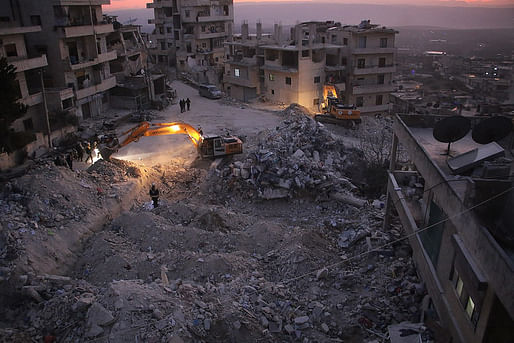

The catastrophic events have devastated countless heritage structures, archaeological areas and religious sites, many still active places of worship, across an area so vast that it encompasses ten Turkish provinces and impacts more than 13 million people.
Though less extensively reported, damage to heritage sites is most significant in the southernmost province of Hatay. The city centre of Antakya [...] has been almost completely flattened.
— The Art Newspaper
The World Bank estimates the total physical damage in Turkey to be approximately $34.2 billion. The Gaziantep Castle, a 2nd-century fortress later expanded under Emperor Justinian, and Aleppo's ancient Citadel in neighboring Syria are perhaps the most significant historic sites to be heavily damaged.
All told, there were at least 173,000 structures destroyed or damaged across Turkey as a result of the outmoded building codes and blatant corruption within the construction industry.
For their part, UNESCO says they are “mobilizing [...] experts, in conjunction with its partners such as ICOMOS, to establish a precise inventory of the damage, if there is any, to safeguard these sites with the cooperation of national authorities, while being aware that their priority at this stage is emergency disaster, rescue and relief.”
1 Comment
As a facade engineer, the extent of damage to heritage sites in Turkey and Syria due to the recent earthquakes is disheartening. However, there are solutions to mitigate the impact of such disasters on heritage structures.
First and foremost, it is crucial to improve building codes and regulations in these regions. Strengthening building codes and regulations can help ensure that structures are better equipped to withstand natural disasters like earthquakes, thus reducing the damage to heritage sites.
In addition to improving building codes, it is essential to prioritize the implementation of seismic retrofitting and restoration techniques on existing heritage structures. Seismic retrofitting is a process of reinforcing existing buildings to make them more resistant to earthquakes, while restoration techniques can be used to repair and reconstruct damaged heritage structures.
Furthermore, it is important to prioritize the use of traditional and sustainable building materials and techniques in the construction and restoration of heritage structures. Traditional materials such as stone, brick, and timber are more durable and sustainable in the long run, reducing the likelihood of damage during natural disasters.
Collaboration between international organizations such as UNESCO, ICOMOS, and national authorities is also essential to establish a precise inventory of the damage and prioritize the safeguarding of heritage sites. Such partnerships can facilitate the exchange of knowledge and expertise, which is critical to ensure the effective implementation of restoration and preservation techniques.
Overall, the devastating impact of the recent earthquakes on heritage sites in Turkey and Syria highlights the need for improved building codes and regulations, seismic retrofitting and restoration techniques, and collaboration between international organizations and national authorities. By prioritizing the preservation and restoration of heritage sites, we can safeguard these valuable cultural assets for future generations
Block this user
Are you sure you want to block this user and hide all related comments throughout the site?
Archinect
This is your first comment on Archinect. Your comment will be visible once approved.